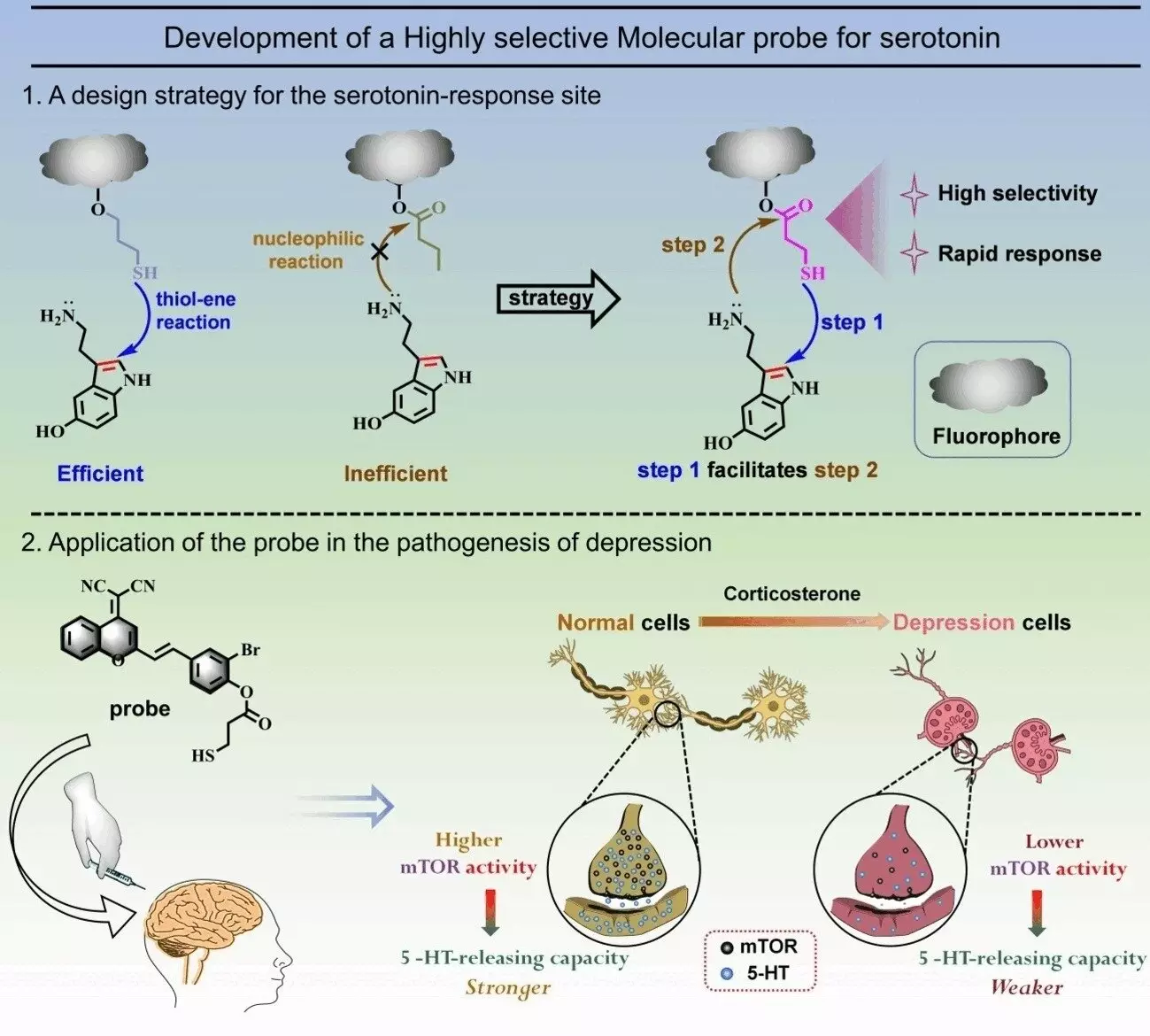The debate surrounding the correlation between serotonin and depression is ongoing and has significant implications for the diagnosis, treatment, and drug development of this mental health condition. A team of researchers from China recently developed a fluorescent probe that promises to shed light on this complex relationship. This probe, designed to be highly sensitive and selective towards serotonin, has shown promising results in both cell and animal models.
Led by Weiying Lin at Guangxi University in China, the research team set out to create a molecular fluorescent probe that could specifically target serotonin. Given the structural similarities between serotonin and other biomolecules like melatonin and tryptophan, designing a probe that could differentiate between them was a challenging task. The researchers tackled this issue by incorporating a reactive group (3-mercaptopropionate) that could selectively react with serotonin through a cascade reaction. By attaching this reactive building block to a fluorescent dye (dicyanomethylene-benzopyran derivative), they created a probe that could be switched “on” in the presence of serotonin.
Using their newly developed fluorescent probe, the research team was able to visualize serotonin levels within cells, particularly in a neuron cell line model of depression induced by corticosterone administration. Surprisingly, the serotonin levels in both normal and “depressed” cells were found to be similar. However, the depressed cells showed a reduced ability to release serotonin in response to stimulation. The administration of conventional antidepressant drugs, such as serotonin reuptake inhibitors, only marginally increased serotonin release. This led the researchers to investigate the role of mTOR, a biomolecule involved in cellular signaling pathways, in serotonin release.
The team’s findings suggested that the primary factor in depression may not be the absolute level of serotonin but rather the ability of neurons to release this neurotransmitter. The activity of mTOR appeared to play a crucial role in regulating serotonin release, offering new insights into the treatment of depression. Activators of mTOR were found to increase serotonin release in depressive cells, while inhibitors of mTOR reduced serotonin release in normal cells. These results were further validated in neuron and mouse models, highlighting the potential therapeutic implications of targeting mTOR in the treatment of depression.
The development of a highly selective fluorescent probe for serotonin imaging has provided valuable insights into the complex relationship between serotonin and depression. By highlighting the importance of neuronal serotonin release and its regulation by mTOR, this research opens up new avenues for future research and drug development in the field of mental health.


Leave a Reply